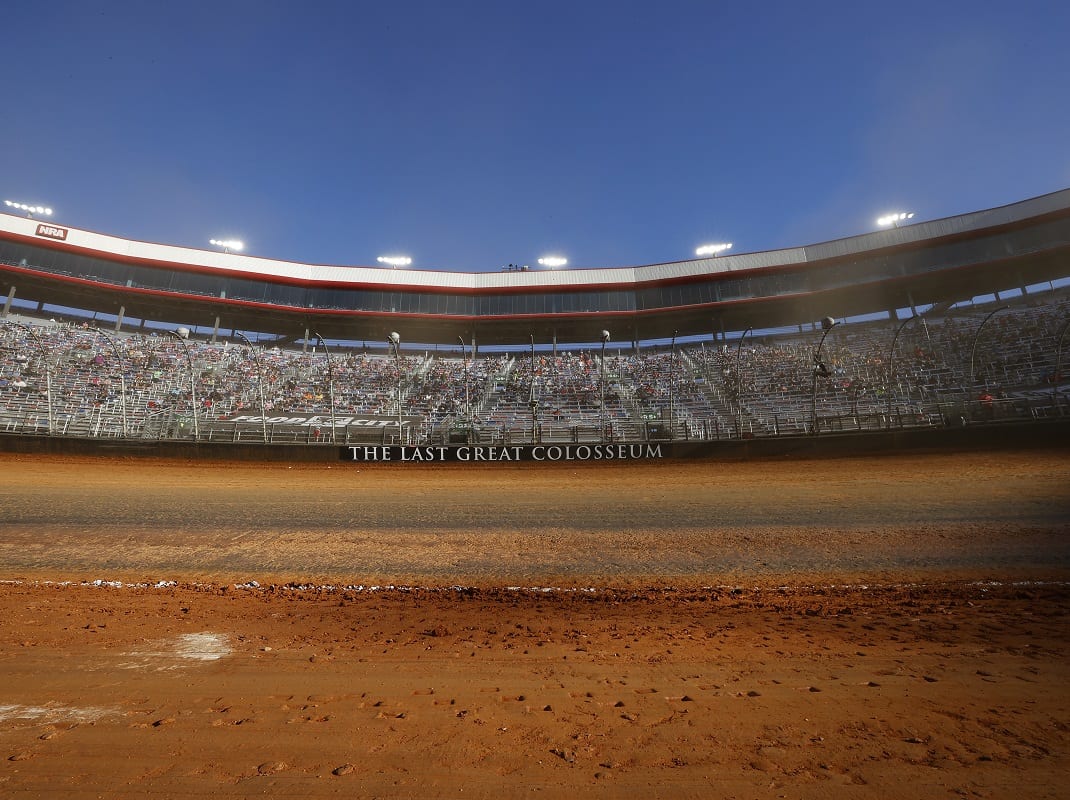BRISTOL, Tenn. – Though it was pushed back to Monday by torrential rains and dangerous flooding in Sullivan County, the Food City Dirt Race lived up to its historic billing – and then some.
The first NASCAR Cup Series event on dirt since 1970 featured a wildly changing and unpredictable track surface, the challenges of low visibility at times and the excitement of grassroots racing at its finest.
But at its core, Monday’s headliner at Bristol Motor Speedway – known colloquially in the motorsports industry as The Last Great Coliseum – felt like a cross between a leap back in time and a slice of the hard-nosed action that fans and media alike have been longing for during most of the past decade.
It was, indeed, a battle of gladiators inside an arena that tested drivers to their limits all race long.
After all, how often can one say they heard cries over the in-car radio frequencies of, “It’s hard to see out here!” or “I feel really lost right now” from some of the best stock-car racers in the world?
Even before that, however, Monday was a culmination of a Herculean effort just to have racing at all.
Less than 24 hours earlier, a fierce line of thunderstorms moved across Tennessee, dumping more than two inches of rain on the temporary half-mile dirt surface covering Bristol’s famed high banks.
Flooded creeks and grounds threatened various areas of the track property, including the FOX television compound, and – at least for a while – left even starting the racing program in doubt with the amount of water the track took on prior to Monday.
However, track groundskeeper Mike van Genderen, Speedway Motorsports’ Steve Swift and more worked through the night Sunday into Monday morning to bring the track back and deliver a positive product for the fans.
Overall, those efforts were rewarded in spades.
Martin Truex Jr. topped an entertaining NASCAR Camping World Truck Series event, and later on in the day, Joey Logano raced to victory in the NASCAR Cup Series headliner despite dusty conditions in the second half of the event, a largely locked-down and rubbered-in race track and an overtime finish.
It marked the culmination of months of effort and planning, as well as a weekend where it took a while before things ultimately began to go right.
Once they did, NASCAR Executive Vice President and Chief Racing Development Officer Steve O’Donnell tipped that he was largely pleased with what he saw at Bristol both on and off the race track.
“What a wild few days here at Bristol. I think the industry had everything thrown at it,” noted O’Donnell. “When you think of the challenge of coming into this weekend just to race on dirt, how much went into that, and then you add on the fact that we experienced flooding, hail, a day race with unbelievable sunshine, more laps with a truck and a Cup race than you’d ever put on a race track normally if you were conducting a dirt event … this was a huge effort and we’re very proud of the industry for setting this up.
“We got the racing in for the race fans, knowing it was a challenge for our fans to stick around on Monday, but an incredible crowd turned out here and we’re really proud of that,” O’Donnell continued. “We certainly learned a number of things in the race and throughout the week that we can apply as we go forward in 2022. All in all I’d give it a thumbs up with some things to learn.”
One of those learning moments came in the second half of the Cup Series feature, when multiple yellows and extremely dusty conditions forced NASCAR officials to move from double-file to single-file restarts for the balance of the race.
It wasn’t necessarily a move O’Donnell and his staff wanted to make, but it was a change on the fly that he felt was in the best interest of the race as it wound into the closing stages.
“If you look at dirt racing in general, I know some of our fans and the NASCAR industry aren’t used to seeing what happened during the race with the dust buildup, but it’s a very common practice (in dirt racing), if you experience that situation, to try and go single file to alleviate some of the dust and some of the visibility issues,” O’Donnell explained. “That’s why we made that move.
“We felt that once we made that move, we were going to stay with it for the duration of the race.”
To continue reading, advance to the next page.
